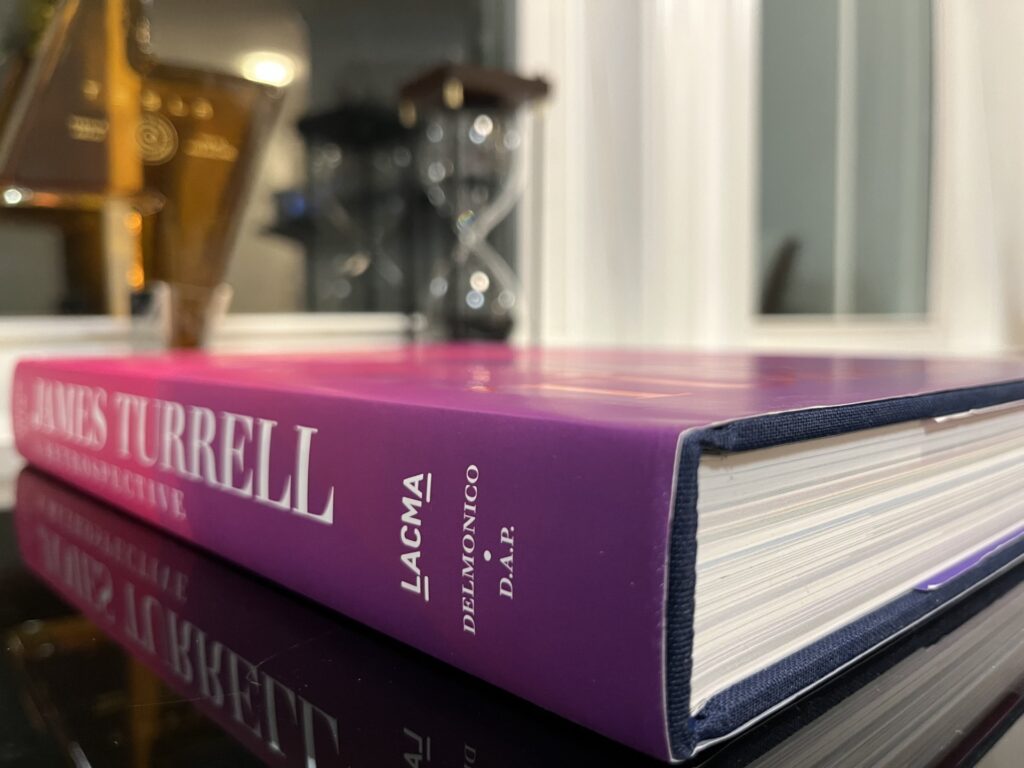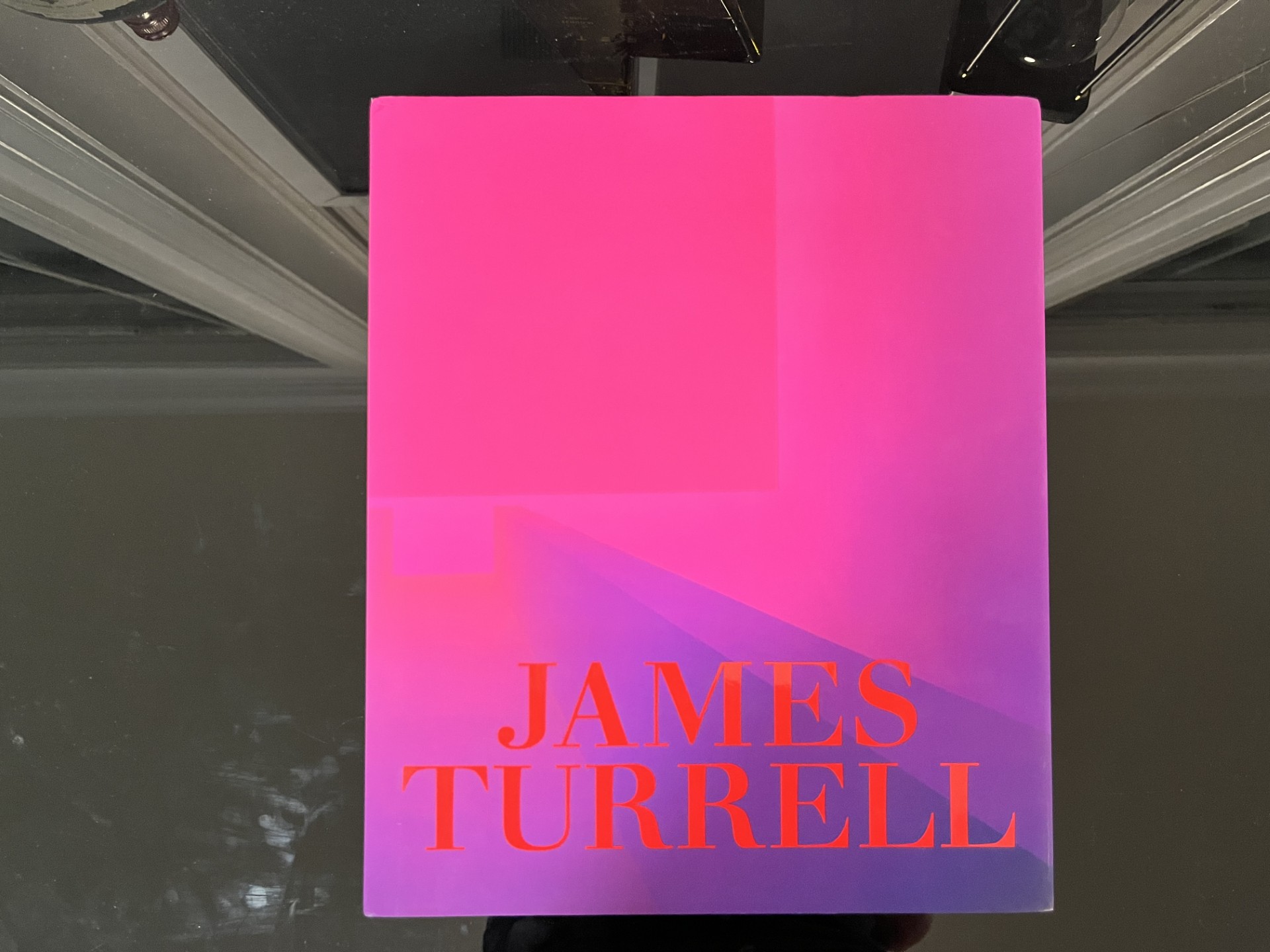James Turrell’s work captures the imagination and transforms spaces using light and color. His coffee table book, “James Turrell: A Retrospective,” serves as a stunning visual guide to his artistic journey. This book provides an insightful look into Turrell’s unique ability to create immersive experiences through art.
Through beautiful photographs and thoughtful commentary, readers can explore Turrell’s career from his early experiments with light to his monumental installations. The book not only showcases his acclaimed works but also reveals the philosophy behind his creations. For anyone interested in the intersection of art and perception, this retrospective is a must-have for their collection.

In a world where visual art often competes with technology, Turrell’s contributions remind viewers of the power of simplicity and nature. This retrospective invites everyone to engage with art in a way that is both personal and profound. Ultimately, it opens a dialogue about how light can challenge perceptions and influence emotions.
The Life of James Turrell
James Turrell was born on May 6, 1943, in Los Angeles, California. He grew up in a Quaker family, which influenced his artistic vision, particularly his relationship with light.
He studied at Pomona College, where he earned a degree in Psychology. This background allowed him to explore how people perceive light and space.
Turrell’s artistic journey began in the 1960s when he started experimenting with light projections. His work grew significantly over the years, leading to major projects like the Roden Crater, an unfinished volcanic crater transformed into a large-scale artwork.
He became known for creating immersive environments that invite viewers to experience light in unique ways. His passion for blending art and science made him a leader in contemporary art.
Throughout his career, Turrell has received numerous awards and honors. His influence can be seen in various museums and galleries around the world, including a significant exhibition at the Los Angeles County Museum of Art.
James Turrell continues to explore the boundaries of art and perception. His contributions to the world of art make him a pivotal figure in understanding how light affects our perception of reality.
Concepts and Themes in Turrell’s Work

James Turrell’s artwork centers around the power of light. He transforms simple spaces into immersive experiences. By manipulating light, he encourages viewers to engage with their surroundings in new ways.
One major theme is perception. Turrell uses light to challenge how people see and understand their environment. His work often prompts questions about what is real versus what is perceived.
Another important concept is spirituality. Turrell’s installations evoke a sense of wonder and transcendence. He draws on his Quaker background, inviting viewers to reflect on their connection to light and space.
Turrell also explores time and change. Many of his works shift as daylight changes, creating a dynamic viewing experience. This highlights the transient nature of both light and life.
In his creations, Turrell often integrates nature. He connects indoor experiences to the outside world. This approach deepens the emotional impact of his work.
Through these themes, Turrell encourages viewers to be present. He invites them to slow down and truly see the world around them. The result is art that is both engaging and thought-provoking.
Photography and Imagery
James Turrell’s work is known for its unique use of light and space. The photography featured in James Turrell: A Retrospective captures the essence of his artistic vision.
The images show a wide range of projects. From early works to the monumental Roden Crater project, each photograph illustrates how Turrell engages with light. The book includes special photography by Florian Holzherr, which helps reveal the mesmerizing effects of light in his installations.
Turrell’s art often invites viewers to experience light in different ways. The photographs allow readers to appreciate how he transforms environments. They illustrate his belief in the power of light to create perception and emotion.
Highlights of the photography include:
- Dynamic light projections: Images capture the changing experience of light.
- Spatial transformations: Photographs show how spaces become intimate and vast through light.
- Color play: The use of color enhances the ethereal quality of his work.
This collection not only showcases Turrell’s projects but also stirs curiosity. Each image encourages viewers to explore their perception of light and how it shapes reality. It’s a visual feast that complements the text beautifully, making it a must-have for art lovers.
Notable Installations
James Turrell’s work is characterized by unique installations that create immersive experiences. Three key highlights include the Roden Crater, Skyspaces, and the Ganzfeld Series. Each of these installations demonstrates Turrell’s masterful use of light and space.
Roden Crater
Roden Crater is Turrell’s most ambitious project, located in Arizona. This site is an extinct volcano transformed into a massive art piece. It is designed to frame the sky and celestial events, offering a unique perspective on the cosmos. Visitors experience light in various forms, enhancing their connection to nature and the universe.
Turrell plans to integrate the changing light throughout the day and year, making each visit a special experience. As a work-in-progress, it remains a testament to his vision and dedication. This installation continues to evolve, promising new discoveries for future visitors.
Skyspaces
Skyspaces are another significant aspect of Turrell’s work. These installations create a space where viewers can experience the sky in a unique and reflective way. Each Skyspace features an open roof that frames the sky, allowing light to change the viewer’s perception.
The interiors are often painted in soft colors, enhancing the experience. Visitors sit on benches and observe the changing light, prompting contemplation and tranquility. Each installation is crafted specifically for its location, making them distinct and personal.
Ganzfeld Series
The Ganzfeld Series offers a different kind of experience. These installations immerse viewers in an environment filled with uniform light, eliminating visual distractions. Visitors find themselves surrounded by softly glowing walls that create an enveloping sense of space.
The term “Ganzfeld” refers to a perfect field of vision with no points of reference. In this unique setting, viewers often report feelings of weightlessness or detachment. The simplicity and purity of the design lead to profound moments of self-reflection.
James Turrell’s notable installations transform how individuals engage with light and space, creating lasting experiences. Each project invites participants to explore their perceptions and emotions in innovative ways.
Response and Critique
The responses to “James Turrell: A Retrospective” reveal a blend of academic insights and public enthusiasm. Scholars highlight the depth of Turrell’s work, while audiences are captivated by the sensory experience of his installations. Both perspectives offer a comprehensive view of Turrell’s artistic impact.
Academic Perspectives
Academics appreciate Turrell’s unique approach to light and space. His work challenges traditional art forms, prompting discussions about perception and reality. Critics note that the retrospective successfully chronicles Turrell’s fifty-year journey in art.
Many scholars emphasize the importance of site-specific installations, which engage viewers in new ways. Turrell’s art often requires active participation, making it a topic of study in contemporary art discourse.
Through exhibitions like this, art critics analyze the intersection of technology and natural elements in his work. They see Turrell as a pioneer in exploring the relationship between the viewer and the artwork.
Public Reception
The public reception of James Turrell’s retrospective has been overwhelmingly positive. Visitors often express awe at the immersive nature of his installations. Many share personal stories of how his art has transformed their understanding of light.
Audience reviews highlight the emotional response Turrell’s work evokes. Many claim that experiencing his art is unlike any other, providing a sense of wonder.
Social media platforms are filled with images and praise for his innovative style. Overall, the intriguing atmosphere of his installations makes them memorable experiences for visitors across various age groups.
Book Design and Layout
The design of “James Turrell: A Retrospective” reflects the beauty of Turrell’s artwork. Each page features stunning photographs that capture the essence of his light installations.
The layout is clean and modern. It allows the reader to focus on the art without distraction. The use of ample white space helps each image breathe, making the overall experience more enjoyable.
The book includes thoughtful captions that enhance understanding. These captions provide context to the artworks while remaining concise. This balance keeps the reader engaged without overwhelming them with information.
Additionally, high-quality paper gives a luxurious feel. The images pop with vibrant colors and rich details. This quality adds to the visual impact of the book.
Turrell’s journey is presented chronologically, making it easy to follow. Each section transitions smoothly into the next, guiding the reader through his progression as an artist.
Use of Color and Typography
The use of color in “James Turrell: A Retrospective” is striking and intentional. Turrell’s work often explores light and space, and the book reflects this through vibrant hues and subtle shades. Readers may notice how colors complement the artwork, enhancing the visual experience.
Typography plays a crucial role as well. The book features a clean, modern font that is easy to read. This choice allows the artistic visuals to take center stage without distraction.
Highlights of the typography include:
- Bold headlines that draw attention to key sections.
- Clear text that maintains readability against colorful backgrounds.
- Thoughtful spacing that provides a balanced layout.
The combination of thoughtful color schemes and careful typography creates an engaging and immersive reading experience. Together, they mirror Turrell’s artistic vision, making the book not just a collection of images but also a work of art in itself.
Quality of the Print and Paper
The print quality in “James Turrell: A Retrospective” is outstanding. The images are sharp and vibrant, showcasing Turrell’s unique use of light and space.
The book is printed on high-quality, thick paper that enhances the visual experience. This choice of paper allows colors to appear rich and true to life.
Each page feels sturdy, which is important for a coffee table book. A book like this often becomes a centerpiece in homes, so durability is essential.
Additionally, the layout is thoughtful, helping to draw attention to the artwork. The way images are presented complements Turrell’s style, inviting viewers to engage with the content.
The hardcover binding is also notable. It adds to the book’s longevity, making it a valuable addition to any art lover’s collection.
Overall, the combination of quality print and premium paper makes this book a pleasure to explore. It reflects the significance of Turrell’s work while providing a tactile and visual delight.
Comparative Analysis with Other Art Books
James Turrell’s “A Retrospective” stands out among art books for its unique focus on light and space. Unlike traditional art books that feature paintings or sculptures, this book invites readers into an immersive experience.
In comparison to other notable art books, such as those on artists like Damien Hirst or Yayoi Kusama, Turrell’s work emphasizes sensory perception. Most art books showcase visual techniques, but Turrell’s approach is about feeling light.
- Artistic Approach:
- Turrell: Focuses on the viewer’s experience of light.
- Hirst: Centers on themes of mortality and shock.
- Kusama: Explores infinity through patterns and repetition.
The photography used in Turrell’s book is specially commissioned, enhancing the experience. This contrasts with many other art books that rely on existing images of artwork.
Audience Engagement is another area where Turrell excels. His book is designed for both art lovers and newcomers. Other books may assume prior knowledge, making them less accessible.
